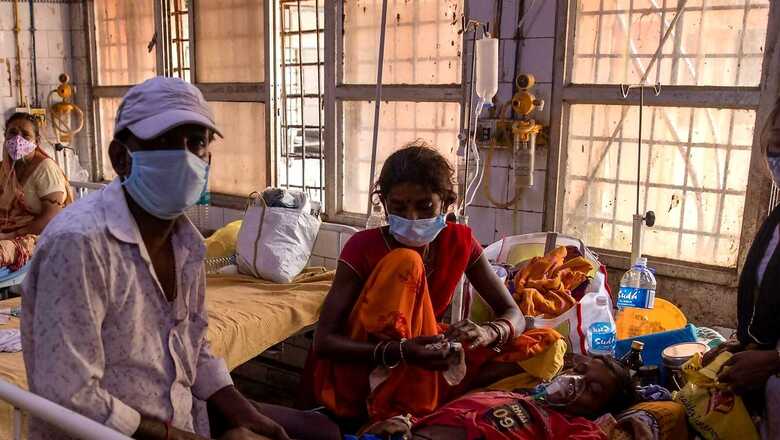
views
At a time when the Covid pandemic has disproportionately affected people with diabetes, exposing them to a high risk for severe illness and mortality, the ICMR has, for the first time, released guidelines for the management of type 1 diabetes. The burden of type 1 diabetes, or juvenile diabetes, a genetic condition that often presents itself early in life, is also increasing, the apex medical research body ICMR said on Monday. Type 2 diabetes is chiefly a lifestyle-related disease that a patient develops over time.
India is home to the world’s second-largest adult diabetes population after China and every sixth person with diabetes is an Indian. India has nearly 95,600 cases of type 1 diabetes among children below 14 years of age, and every year around 15,900 fresh cases are being reported in this age group. An estimated of 2.5 lakh people in India suffer from type 1 diabetes.
According to health department officials, cases of type 2 diabetes among children and adolescents are on the rise and obesity is the primary reason for it. In the registry of people with diabetes with young age at onset from India, 25.3 per cent of individuals developing diabetes under the age of 25 had type 2 diabetes. The past three decades witnessed 150 per cent increase in the number of people with diabetes in the country, the guidelines document stated.
The growing prevalence of prediabetes indicates a further increase in diabetes in the near future. Diabetes in India has traversed from the high to the middle income and underprivileged sections of our society, the ICMR said.
The first nationwide diabetes prevalence study (INDIAB), funded by the ICMR reported a narrowing of urban-rural differences in the burden of the disease. A matter of immense concern is the progressive lowering of age at which type 2 diabetes is presenting, with an inflection in disease prevalence becoming apparent in the age group of 2534 years in both urban and rural areas.
Over one million children and adolescents in the world have type 1 diabetes, and recent estimates from the International Diabetes Federation suggest that India has the highest number of incidents and prevalent cases of type 1 diabetes in the world, the document says. Individuals with type 1 diabetes need support to survive, use insulin and other therapies, and live their entire life without stigma, restrictions, or disabling complications due to their illness.
Intensive management of all aspects of diabetes, especially glycemic (blood glucose) control, is now the gold standard in type 1 diabetes management, the document said. In India, there exists considerable variability in the quality of diabetes care, which depends upon various factors such as accessibility to services, affordability of drugs, attitude and perceptions of care providers, lack of specialists and diabetes educators, standardized laboratories and treatment guidelines. Although several international guidelines are available for type 1 diabetes management, a context-specific culturally adaptive guideline that ensures affordable diabetes care is the need of the hour to inform the diabetes care providers in low and middle-income countries such as India, the medical research body stated.
The ICMR type 1 diabetes guidelines is a comprehensive document providing advice on the care of diabetes in children, adolescents and adults.
Read all the Latest India News here




















Comments
0 comment